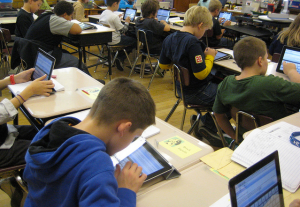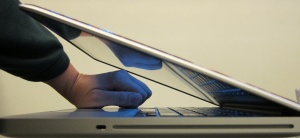 |
| Hayden and Natalie created these curious astronauts! |
Saturday, February 25, 2012
Sommerville's answer to new discovery!
A new planet outside our solar system has been discovered in 1998 according to BBC World News and just recently they discovered that it is made of hot ice http://bit.ly/wAcQ2V. Here is Sommerville's response: We have astronauts ready to travel into space!! Okay, maybe they aren't Lego Astronauts like the last one that broke through the stratosphere recently but they are ready to go! :-)
Tuesday, February 21, 2012
Happy Pancake Tuesday!!
Tuesday, February 14, 2012
Happy Valentine's Day!
The Before School and After School Programme wishes you a Happy Valentines Day with more crafts to celebrate with!
The Junior-Intermediate students created these lovely crafts, the Heart Book Marks by Alicia and Samantha; the large Tissue Heart by Samantha.
 |
| Heart shaped Book Marks |
The Junior-Intermediate students created these lovely crafts, the Heart Book Marks by Alicia and Samantha; the large Tissue Heart by Samantha.
 |
| Jacqueline and Leanne created knot bracelets. |
Wednesday, February 8, 2012
Valentine's crafts
Today the primary students created some pop up cards and wire stemmed flowers with paper petals with a bead in the centre.
The petals were created with paper hearts which you poke the wire through. Then you twist the two ends of the wire around each other to form the stem and wrap wired ribbon around it and glue it at the top and the bottom to fasten the ribbon
.
 | |
| Andrei's and Natalie's cards |
 |
| Hayden's and Natalie's flowers |
 |
| Wire stemed flowers made by Daniel, Jefferson, Andrei, and Sasha. |
The petals were created with paper hearts which you poke the wire through. Then you twist the two ends of the wire around each other to form the stem and wrap wired ribbon around it and glue it at the top and the bottom to fasten the ribbon
.
Tuesday, February 7, 2012
Valentine Garland
Who'd think of Garland at Valentine's Day? Well the primary students in the After School Programme did. They cut out a couple of sizes of hollow hearts and joined them together to make a string of hearts. We hung them up to decorate the room for the upcoming Valentine's Day!
Credit goes to Natalie, Dhillon, and Daniel.
Credit goes to Natalie, Dhillon, and Daniel.
Wednesday, February 1, 2012
Keeping Students Engaged in the Classroom
Here is an interesting article that I found through my twitter account by Janet Moeller-Abercrombie.
Keeping Students Engaged in a 1:1 Project-Based Classroom [guest post]
 January 29, 2012
January 29, 2012  14 Comments
14 Comments  Image approved for copy by Creative Commons.
Image approved for copy by Creative Commons. Source: http://bit.ly/vYUkXB
When laptops first arrived in my classroom, I worried about classroom management. How could I create an environment where students used their computers as tools rather than toys?
I was worried for nothing. The following are suggestions for keeping students engaged in a project and accountable for their time with computers:
Students make a plan.
Students are most tempted to open widgets, games, and social chats when they are faced with a blank screen and have no plan.
Much of the time, students think they have a plan. If you ask them What are you going to do?, the answer is usually I'm gonna make a Power Point about... or I want to make a movie about... Those answers indicate that students are thinking of technology before content.
Instead, ask What are you trying to learn? or What are you trying to communicate? or What are you working on as a writer? Those questions get answers like I want to know more about the horses that Civil War generals rode or I want to convince people that Justin Bieber is the best singer ever or I'm trying to describe the character's actions.
When you ask about learning and communication, you are signaling that the content is more important than the technology. Pull aside those who are struggling with plans. Let them talk together and encourage them to sketch their ideas with diagrams or bullet points and return to the computer later. Students with a plan tend to stay on task.
Students set time-bound goals.
Once students have a plan, they break the project into smaller tasks that can be finished in 10- to 15-minute chunks of time. Have students write the specific tasks on Post-it notes. Post-its are set beside the computer. On their Post-its, students finish the sentence, "In the next [x-amount of] minutes, I plan to..." They generally write things like...
- Create an outline for my essay
- Write my introduction
- Find three pictures about...
- Do my voice recording
- Finish four slides of my Power Point/Keynote
- Find at least three database articles on...
- Draft at least three paragraphs
- Use Google docs to peer-edit so-and-so's essay
- Upload my story to Voicethread
Laptop screens are "fisted" or "put at half mast".

Teachers don't lecture much in a project-based learning environment. However, sometimes student work time is interrupted so the teacher can give reminders or clarify directions.
Ask students to "fist" their computer (or "put the screen at half mast"). Screens should be gently lowered so that students' fists fit between the edge of the track pad and the screen.
When screens are fisted, students are not distracted by items on their screen nor can they type. At the same time, students do not lower their screens to the point that the computers go to sleep. In an iPad environment, students might carefully face their screens down on the desk.
Fingers indicate the amount of time students need to complete a shorter task.
Some tasks are shorter and need to be completed within a few minutes of class. After students have worked for a reasonable amount of time, ask students to show fingers for how many additional minutes they need. Fisted computers signal completion.
If a student is far behind the rest of the class, try to determine whether the student got distracted or if the student needs reteaching. Have the student take a screenshot of his or her progress. Screenshots are helpful to guide future conversations.
Circulate the room, conferencing with students.
Walking and talking with students is important with or without computers. In her article 10 Ways to be a Terrible Teacher, Vicki Davis describes the terrible teacher as one who is working on his or her own computer and not paying attention to students.
Students welcome teacher conversation. They are eager to share their progress and request advice when they're stuck. You build relationships with students when you talk to them about their work.
Rather than banning chat, teach students how to use it for collaboration.Chat features are programmed into Gmail and Google products. The first year, I banned chats. Then, I realized that chats can be used for student collaboration.
I glance at the chat windows as I circulate the room. Since students have specific, time-bound goals, most chats are used to ask peers to look over a paragraph or help with another aspect of the project.
Don't be afraid to have tough conversations with individual students.Each year, I have to pull aside one or two students to talk about time management. It's not a punitive conversation. The conversation goes something like this:
I've noticed you haven't made much progress on...I need to know what's getting in the way of your progress. I'm not asking because I want to get you in trouble. I'm asking because you're now x-years old and I'm worried that, if you get in the habit of...,then school will be really hard for you in the future.Many of the suggestions above apply to project-based learning environments both with and without computers. The trick in a 1:1 environment is to maintain focus on learning and communication. Then let technology naturally enhance those outcomes.
What tricks do you use to keep students engaged?

Janet Moeller-Abercrombie is the author of Expat Educator. She has 16 years of teaching experience and currently works full time at Hong Kong International School. Janet is a doctoral candidate with the University of Minnesota and has begun curriculum consulting with administrators and teachers. She is certified by the National Board for Professional Teaching Standards. @jabbacrombie
Subscribe to:
Posts (Atom)




